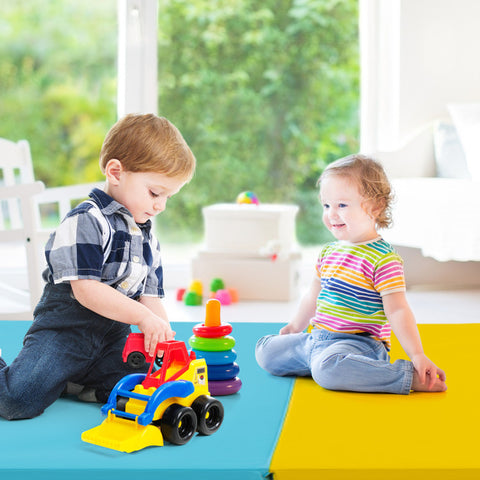News
How to Properly Store Your Gymnastics Mat to Prevent Wear and Tear
A high-quality gymnastics mat is an essential investment for gymnasts of all levels, but improper storage can significantly reduce its lifespan. Whether you're using a tumbling mat, folding mat, or incline wedge mat, taking the right steps to store it correctly will help prevent damage, maintain its cushioning, and keep it safe for future use. Proper care not only extends the durability of the mat but also ensures it remains supportive and hygienic. This guide will walk you through the best storage practices to keep your gymnastics mat in top condition.

Why Proper Storage Matters
Storing a gymnastics mat incorrectly can lead to creases, cracks, and a loss of cushioning. Exposure to excessive moisture, direct sunlight, or heavy pressure can break down the material, reducing its effectiveness in absorbing impact. Mats that are not stored properly may also develop odors, mold, or mildew, making them unsafe for use. By following a few simple steps, you can keep your mat in excellent condition for years to come.
Clean the Mat Before Storing
Before putting your gymnastics mat away, it’s crucial to clean it properly. Dust, sweat, and dirt can accumulate over time, leading to bacterial growth and unpleasant smells. To clean your mat:
- Use a mild soap and water solution to wipe down the surface. Avoid harsh chemicals that could weaken the material.
- Let the mat air dry completely before storing it to prevent moisture buildup.
- For vinyl mats, use a disinfecting wipe to remove bacteria without damaging the coating.
- If the mat has removable covers, wash them according to the manufacturer’s instructions.
Choose the Right Storage Location
Where you store your gymnastics mat is just as important as how you store it. Mats should be kept in a cool, dry area away from direct sunlight and extreme temperatures. Avoid storing mats in damp basements or garages without proper ventilation, as humidity can lead to mold growth. Instead, opt for a space like a closet, storage rack, or dedicated equipment area that allows the mat to maintain its shape and structure.
Proper Folding and Rolling Techniques
The way you store your mat depends on its type. Some mats fold, while others roll up for storage. Follow these guidelines:
- Folding Mats: Ensure the folds align with the natural creases to prevent stress on the material. Stack folded mats neatly without placing heavy objects on top.
- Rolling Mats: Roll the mat loosely to prevent creases. Avoid rolling too tightly, as this can weaken the foam over time.
- Incline Mats (Cheese Wedge Mats): If the mat folds, store it in the folded position. Otherwise, lay it flat in a dry space.
For mats used frequently, storing them vertically on a wall rack can save space and keep them in better shape.
Avoid Common Storage Mistakes
Many gymnasts unknowingly shorten the lifespan of their mats by making storage mistakes. Here are some things to avoid:
- Leaning mats against a rough surface: This can cause abrasions and wear down the vinyl or foam.
- Stacking heavy items on top: Pressure can cause compression damage and reduce the mat’s shock absorption.
- Leaving mats in extreme temperatures: Heat can soften the foam and cause warping, while cold temperatures can make the material brittle.
- Storing while damp: Moisture trapped inside can lead to mold, mildew, and an unpleasant smell.
Additional Tips for Long-Lasting Mats
- Rotate how you store your mat occasionally to prevent permanent creases or pressure marks.
- Use a breathable storage bag to protect the mat from dust without trapping moisture.
- If storing for a long time, check the mat periodically to ensure it remains in good condition.
- Invest in a mat rack or wall hooks for an organized and safe storage solution.
Final Thoughts
Taking the time to store your gymnastics mat properly will help you get the most out of your investment. Whether you use a wedge mat, folding mat, or roll-up mat, keeping it clean, dry, and well-organized will ensure it stays durable and effective for years to come. With these simple yet effective storage tips, you can prevent unnecessary wear and tear, making your mat a safe and reliable training surface.

